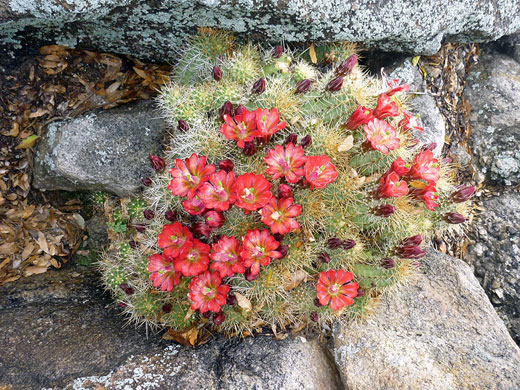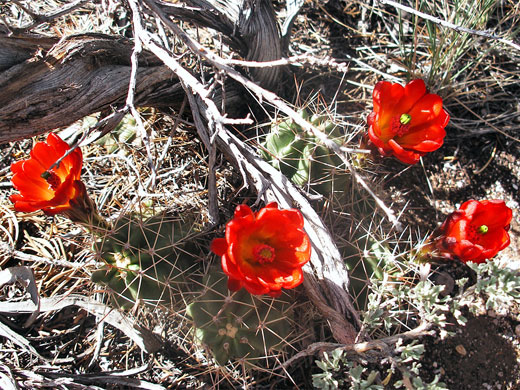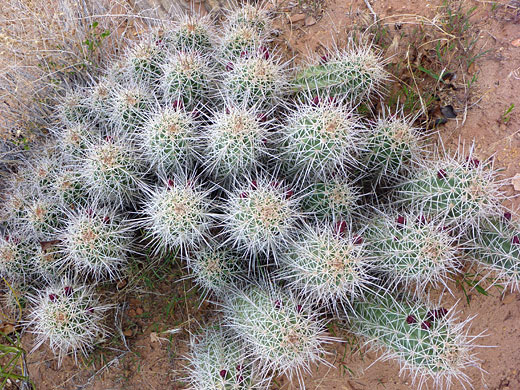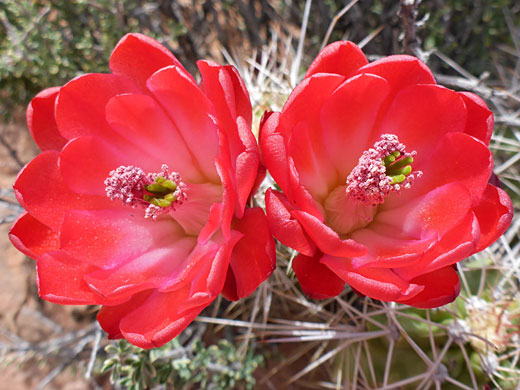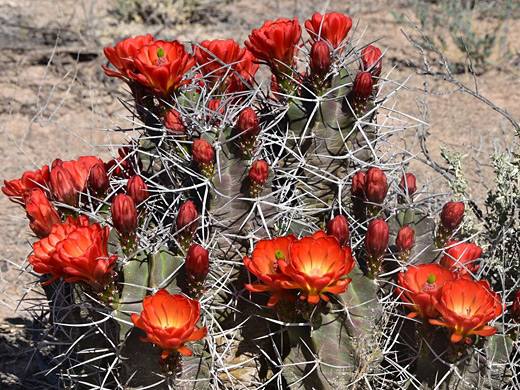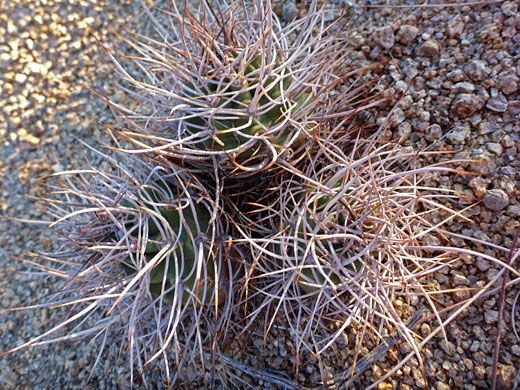Scientific name:
Echinocereus triglochidiatus
Common name:
King cup cactus, Mojave mound cactus
Range:
Across much of the Southwest, from south California and southeast Nevada, through Utah and Arizona to New Mexico and southwest Colorado
Form:
Small to large clusters - up to 500 stems
Habitat:
Variable - woodland, grassland, gravel slopes, canyon sides, sandy deserts, but preferring a certain amount of shade. Up to 9,000 feet
Flowers:
Bright red or bright orange; April, May and June

Distribution map for echinocereus triglochidiatus
A common, widespread and variable species, echinocereus triglochidiatus is best identified by its flowers, which are orange or red in color and have rounded petals; other hedgehog cacti have pointed petals of different colors, the other exception being echinocereus coccineus. These two species are almost identical, and their ranges overlap in two states (Colorado and New Mexico), but the former has generally fewer spines, fewer ribs (these vary from five to eight) and more widely separated spine clusters. The only definitive way to distinguish the two species is to analyse their chromosomes, however.
Spines of echinocereus triglochidiatus range number between three and 11 per areole, and are between half an inch to 4 inches in length, with centrals somewhat longer than radials. They are usually light in color, and not dense, allowing the dark green stems to be visible, but in some specimens the spines are darker and more densely spaced. Spines may be stright, curved or somewhat twisted. This is one of the most branched species of all cacti, often forming a rounded clump of hundreds of stems, many feet wide.
Aside from the natural differences in form and spination, there are several named varieties including var arizonicus, found in central Arizona (sometimes considered to be a separate species); this has ribs that are slightly spiral rather than straight, and rather thicker spines.
Another notable population occurs in White Sands National Park, New Mexico; here the stems are unusually tall and broad, possibly influenced by saline ground water.
Spines of echinocereus triglochidiatus range number between three and 11 per areole, and are between half an inch to 4 inches in length, with centrals somewhat longer than radials. They are usually light in color, and not dense, allowing the dark green stems to be visible, but in some specimens the spines are darker and more densely spaced. Spines may be stright, curved or somewhat twisted. This is one of the most branched species of all cacti, often forming a rounded clump of hundreds of stems, many feet wide.
Aside from the natural differences in form and spination, there are several named varieties including var arizonicus, found in central Arizona (sometimes considered to be a separate species); this has ribs that are slightly spiral rather than straight, and rather thicker spines.
Another notable population occurs in White Sands National Park, New Mexico; here the stems are unusually tall and broad, possibly influenced by saline ground water.
All Contents © Copyright The American Southwest | Comments and Questions | Contribute | Affiliate Marketing Disclosure | Site Map




